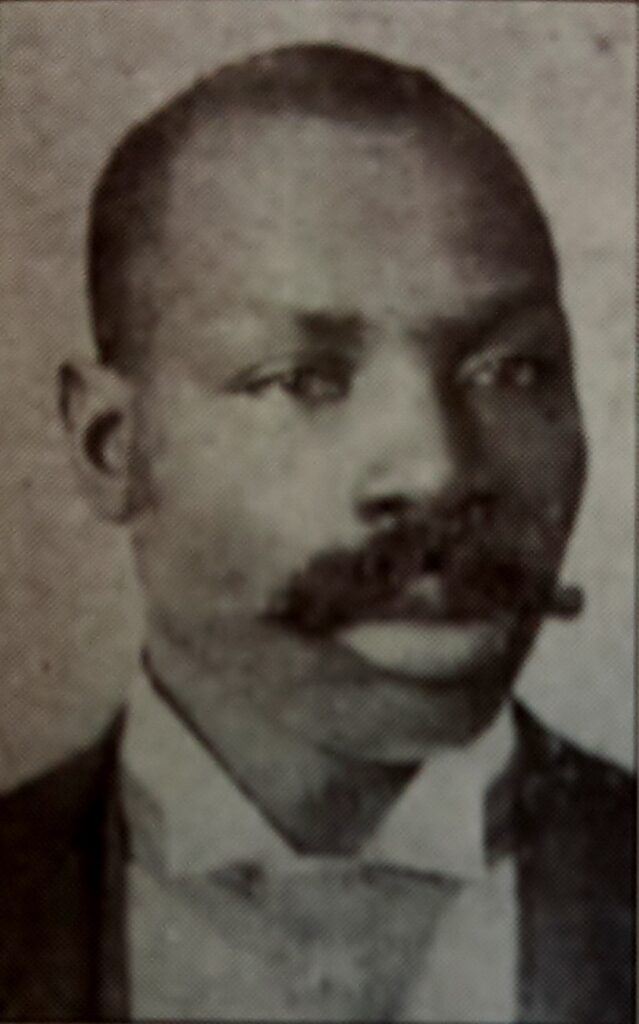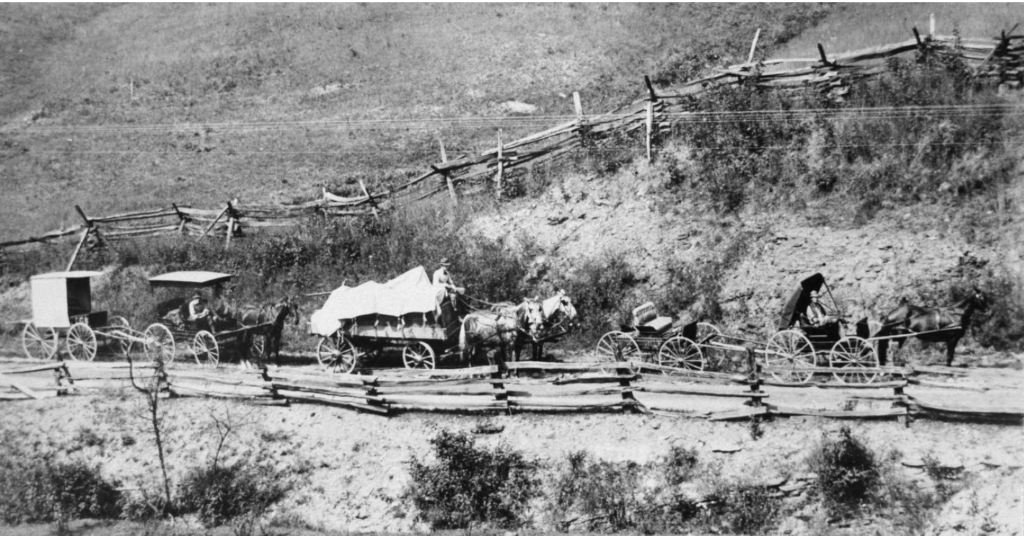
Wooster in the Late 19th Century
Wooster continued to expand throughout the nineteenth century as citizens integrated new technology into their lives and grew even more connected to the wider world. In 1852, between 10,000 and 20,000 people arrived to celebrate the arrival of the first train to pass through Wooster on the Pennsylvania Railway.1Lucy Lillian Notestein, Wooster of the Middle West. New Haven: Yale UP, 1937: 11 The sleek new tracks signaled a departure from the harsh, isolated pioneer lifestyle. Even after the Civil War in the 1860s, in which thousands of Wooster citizens fought and died, the city bounced back. The town developed with the help of new industries, more efficient transportation, and a growing economy.
Wooster Begins to Modernize
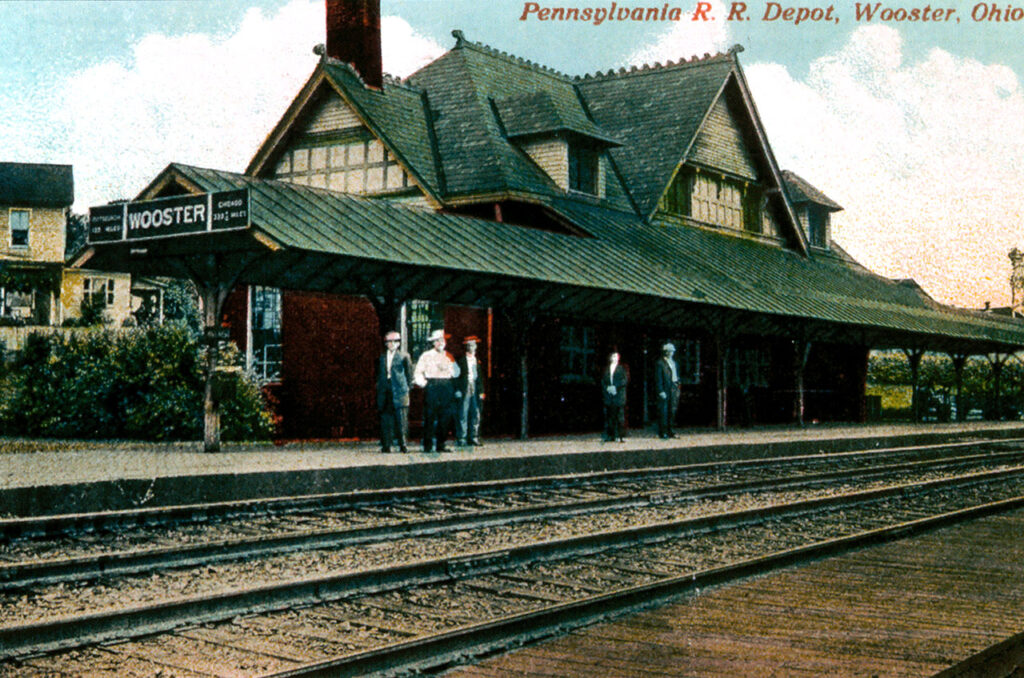
Wooster suddenly became connected to the rest of the nation due to new technologies. For example, public telephone lines were first built in town around 1873. Initially only reaching Orrville, the lines later expanded to Akron and Cleveland, and gradually to the rest of the country.2Notestein, 126 Likewise, when the Pennsylvania Railroad first arrived in Wooster in 1852, it ushered in an era of vast socio-economic expansion for Wayne County. Prior to its construction, 1,913 residents lived in Wooster.3Ohio History Connection, “Wooster, Ohio” However, over the next forty years, with three passenger trains stopping in town each day, the community more than tripled to 5,901 residents.4Notestein, 126 and “Wooster, Ohio”
It wasn’t just the population that grew—new industries also arrived and expanded, and Wooster gradually transformed into a commercial center. Thanks to the Ohio Agricultural Experiment Station, Agricultural ventures were particularly successful, as Wayne County became a national center for breeder associations, horse-trading, and agricultural experimentation.5Robert Leslie Jones, “Ohio Agriculture in History,” Ohio History Journal, April 28, 1956, 249 and 253.
As Wooster’s economy became linked to other regions, national politics took on local significance as well. In 1874, for instance, the Wooster Republican discussed the impacts of fixed railroad rates across states—a topic brought before the national Congressional floor. The article asserted that, “all classes of citizens and all sections of the country are interested in this subject,” a statement which could not be truer for Wooster, as railroads became the town’s connection to the world.6“Cheap Transportation.” The Wooster Republican, December 31, 1874.
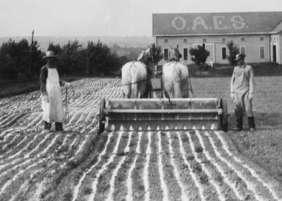
Ohio Agricultural Experiment Station
Learn about the organization that made Wooster the center for agricultural research and experimentation.
Wayne County and the Anti-Slavery Movement
Throughout the 19th century, movements to abolish slavery sprung up across the country, and Wayne County was no exception. The Wayne County Anti-Slavery Society met as early as 1837 and published the resolutions of their group in local newspapers. They believed slavery contradicted the values laid out in the U.S. Constitution. The group brought in lecturers, wrote petitions, and worked with other abolitionist groups to forward their ideas.7“Anti-Slavery Meeting,” Wooster Democrat, July 13, 1843, and “Anti-Slavery Meeting,” Wooster Journal & Democratic Times, August 2, 1837.
Many of those involved with the anti-slavery society were also “conductors” on the Underground Railroad, which passed through Wayne County and the surrounding area, helping enslaved people from southern states escape into Canada. One route is said to have had stops in Wooster, Lodi, Golden Corners, and Oberlin, where “conductors” would hide fugitives, often in their basements, before escorting them to the next known safe location (from Belle Rose Wilson). Those aiding runaways did so despite tremendous legal and social repercussions, should they be found out (from Albert McFadden). Nevertheless, despite backlash from the community, the conductors worked together to make sure the route was secure until slavery was abolished at the end of the Civil War.
Wayne County in the Civil War
When Fort Sumter was attacked on April 12th, 1861, starting the Civil War, citizens of Wayne County were quick to respond.8Ben Douglass, History of Wayne County, Vol. 1 (Indianapolis, IN: B.F. Bowen & Company, 1910), 749. Only a few days after, the first volunteer company from the area was organized and sent off to Columbus.9Douglass, 750. As the conflict progressed, more Wooster and Wayne County residents joined or were drafted into Ohio regiments fighting for the Union. From 1861 to the war’s end in 1865, 3,200 residents voluntarily enlisted, many of whom participated along with conscripted forces in some of the most important battles of the war, including the iconic Battle of Gettysburg from July 1st to 3rd, 1863.10Douglass 749, 752.
At home, women mobilized to form the Wayne County Aid Society, an example of the soldiers’ aid societies that were emerging around the state.11Ohio History Connection. “Soldiers’ Aid Society.” The society worked to provide hospitals with clothing, bandages, food, and linens, among other supplies intended to keep wounded soldiers as comfortable as possible.
The University of Wooster
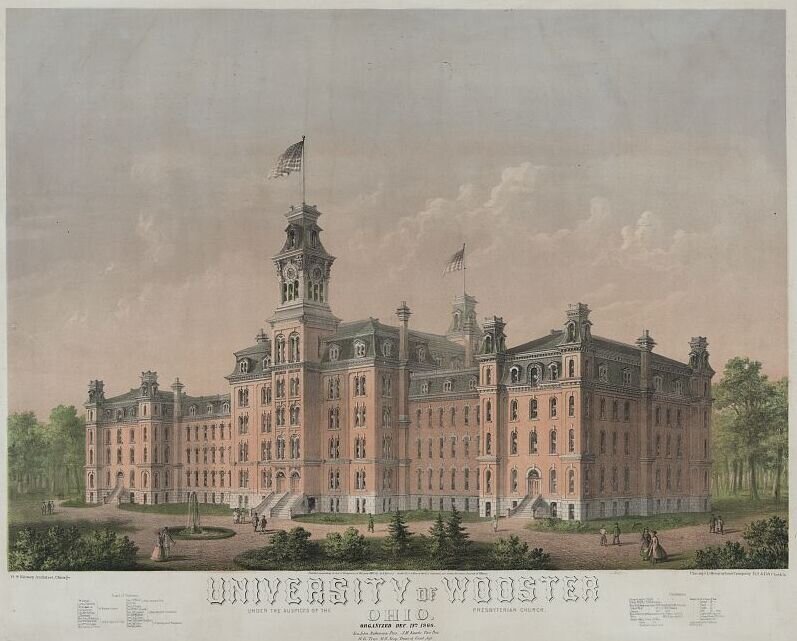
When Reverend James A. Reed stood atop the wooded hill in 1865 and surveyed the surrounding land, he decided the spot should be dedicated to higher learning. He proposed the idea to Ohio’s Presbyterian Synod, which was searching for a location for a new university. Other cities, such as Mansfield, wanted the honor, but Wooster’s community was determined to have it. Editorials in papers like the Wooster Republican convinced citizens of the economic and social benefits of a university in their town.12Notestein, 18-20.
Envisioning Wooster as the next Ann Arbor or Columbus, residents committed to scrounging together the $100,000 necessary to begin construction. Canvassing in nearby towns ensured that, by October of 1866, residents had raised over $92,000 and ensured Wayne County as the school’s final location.13Notestein, 18-20. Prominent community members such as Rev. Reed, Mr. Reason B. Stibbs, and Mr. John H. Kauke led the college’s Board of Trustees.14Notestein, 22. They hired local contractors to carry out plans carefully detailed by architect O.S. Kinney. Meanwhile, the search for a president was underway.
A Developing Downtown
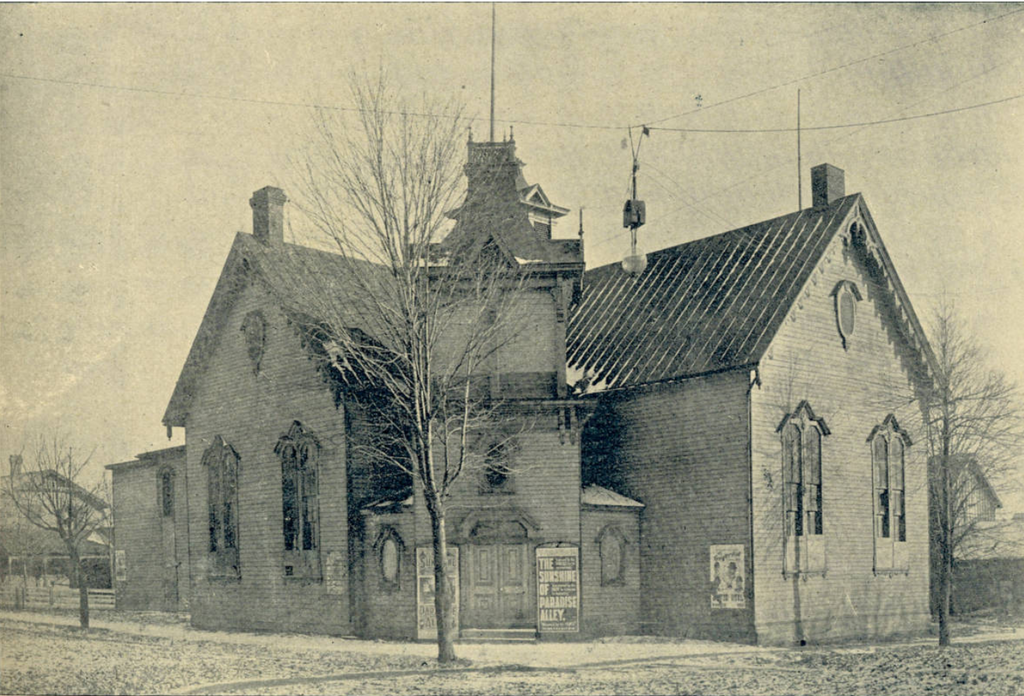
“With the arm of resolution / carves she out herself a page, / On the roll and grand achievements / of a fast, progressive age,” wrote poet E. G. Clingan for the 1857 dedication of Wooster’s Arcadome Hall, the town’s new lecture, debate and meeting venue.15Douglass, 563. Throughout the following decades, the hall would host several prominent figures, including Frederick Douglass and Mark Twain.16“Lecture of Mark Twain.” The Wooster Republican, January 11, 1872, and “Fred. Douglas.” The Wooster Republican, February 8, 1872.
Arcadome Hall wasn’t the only new building constructed during this period. The Quinby Opera House was built in 1876 on the corner of Larwill and Buckeye. Not long after, more than 1,000 people gathered to celebrate the cornerstone laying ceremony of the new Wayne County Courthouse in 1878.17Notestein, 127 and Paul Locher, “Time Capsule Uncovered,” The Daily Record, March 5, 2016. Likewise, the recently constructed Frick Building or the Downing Block housed some of Wooster’s newest industries, like hardware stores, jewelers and grocers.18“Iron Block Building.” Wayne County Wiki, https://wiki.wcpl.info/w/Iron_Block_Building.
Meanwhile, The Underwood Whip Company (also known as the Wooster Whip Factory) was the town’s largest employer; 64 of the town’s residents worked there, creating products that were sold from New York to Texas.19Ann Gasbarre, “Bits and Pieces: When Whips Were Made Here in Wooster,” The Daily Record, November 1, 2019. Additionally, the Wooster Brush company, which is still in operation today, was founded in 1851.20The Daily Record. “Wooster Brush Recognized by Secretary of State’s Office.” Adam Foss, the founder of the now prosperous company, came from Pennsylvania to Ohio to start his door-to-door business, selling handmade paintbrushes.21Wooster Brush, “Our Company • Wooster Brush,” https://www.woosterbrush.com/wooster/our-company/.
Educational opportunities also changed in Wooster, as the Bixler Business College opened in 1886. By 1901, the Yocum brothers bought the school and moved its location to the Quinby 1887 building.22“Yocum’s Wooster Business College,” Wayne County Wiki. Accessed June 4, 2021, https://wiki.wcpl.info/w/Yocum%27s_Wooster_Business_College. The commercial education it provided proved extremely useful for residents, since the town had so many new businesses.23“Yocum’s Wooster Business College.”
Establishment of Wooster’s Black Community
It was not until after the Civil War that the first Black citizens settled in Wooster. Richard Morrison Sr. and his family arrived in the 1880s and opened a barbershop on East Liberty Street.24Ann Gasbarre, “Bits and Pieces: Donkey to the rescue,” The Daily Record, February 16, 2018.
The Morrisons, soon joined by other new families, sought a place to gather and practice their Baptist faith. Initially, that meant meeting at the Spink Street fire station, though that was not ideal. When the Bethany Baptist Church of Wooster (now known as First Baptist) invited the small congregation to join theirs in 1892, they began meeting together.25“100 Years of Influence,” The Daily Record, Oct. 10, 1992, A4). However, Morrison was determined that their community should have a place of its own. He and other Black citizens organized to raise enough money to purchase a plot of land from Jacob Frick, where they constructed the Second Baptist Church. The church went on to be an important center of Wooster’s Black community for years to come.26“Second Baptist to Mark 71st Founding Anniversary,” The Daily Record, Oct. 2, 1965, 5.
The Morrisons continued to be an influential presence in the Wooster community. Along with forming the 2nd Baptist Church, both Morrison Sr. and his son Dick Morrison continued to run barbershops in town where they hired other Black workers. William Johnson, who was the first Black person to run in Wooster’s local elections, also worked in Morrison’s shop.
Institutions of Social Life
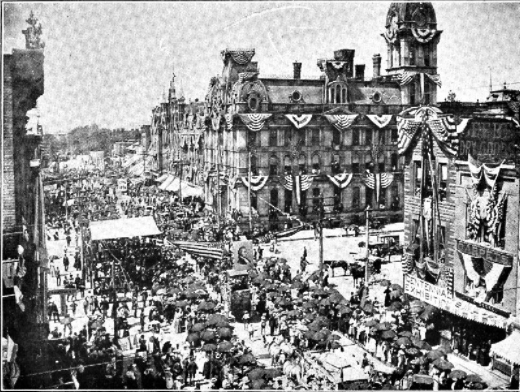
Founded by the Wayne County Agricultural Society, Wayne County Fair was first held in the summer of 1850, marking the beginning of a still-cherished tradition. Originally, the fair was designed to provide a fun outdoor experience and give farmers an outlet to communicate their ideas and needs.27“1849-1886: Early Fairs Faced Growing Pains, Changes of Location,” Wooster Daily Record, August 15th, 1998. According to nineteenth-century accounts, the event included cattle and poultry shows, floral displays with artwork, and a “Farm Product Hall” with massive vegetables on display.28“Wayne County Fair,” Ohio Farmer, October 2nd, 1875. Additionally, by 1875, the board agreed to allow the practice of croquet on the grounds.29“1849-1886: Early Fairs Faced Growing Pains, Changes of Location,” Wooster Daily Record, August 15th, 1998.
Aside from the Wayne County Fair, there were other popular local events. “Strawberry festivals,” for example, were used for fundraising by organizations like churches—an example of which included stands selling cigars and confectionaries, along with musical entertainment. Some wealthy, or even lucky, townsfolk would also be invited to masquerade balls and dances hosted by the town’s elite. In wintertime, young locals found time for bonding through sleighing and skating parties.30Arnold Lewis, Wooster in 1876 (Wooster, Ohio: Wooster Art Center Museum, 1976).
Young people also contributed to the institutions of social life through the creation of traditions at the University of Wooster. This included the introduction of athletic programs and events, albeit more archaic than the established sports programs at the college today. “Socials,” which included the aforementioned strawberry festivals, became staples at the university. Senior parties, lectures, and musical performances were held right before commencement to celebrate the end of the school year.31Notestein, 122
The Black community had different social institutions than their white counterparts. Although there is not much documentation of Black social life, we know Wooster was segregated, resulting in separate recreational places for Black citizens. While many institutions wouldn’t or were reluctant to serve those who weren’t white, Wooster did have Black-owned businesses like restaurants and shops that catered to the Black community.32Wayne County, Ohio Online Resource Center, “Oral History Interview of Laura Jackson,” accessed February 17, 2022, https://wiki.wcpl.info/w/Oral_History_Interview_of_Laura_Jackson.
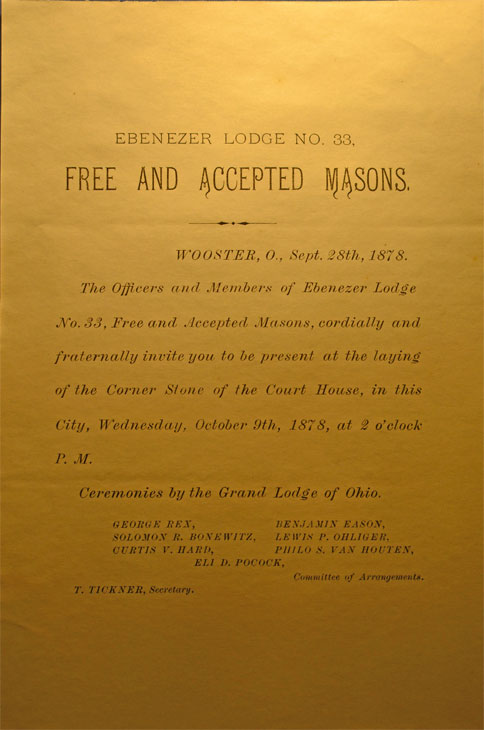
Secret Societies
Learn more about the various secret societies that have existed in Wooster throughout time.
Conclusion
In the latter half of the 19th century, the creation of telephone lines, arrival of railroads, and the establishment of new businesses signified the town’s expansion into a city. Wooster residents played important roles in the movement for the abolition of slavery and in the Civil War, and the community continued to grow—not only with new members, but with new traditions like the Wayne County Fair and the creation of secret societies. Wooster seemed prepared to face the 20th century, with its innovation, continuing growth and development, and changing social and political ideas.
For further reading:
1) Notestein, Lucy Lillian. Wooster of the Middle West. Kent: Kent State University Press, 1971.
2) Douglass, Ben. History of Wayne County, Ohio, From the Days of the Pioneers and First Settlers to the Present Time. Indianapolis, IN: Robert Douglass Publisher, 1878.
3) Lewis, Arnold. Wooster in 1876. Wooster, Ohio: Wooster Art Center Museum, College of Wooster, 1976.
4) Wilbur H. Siebert Underground Railroad Collection. Ohio History Connection.
